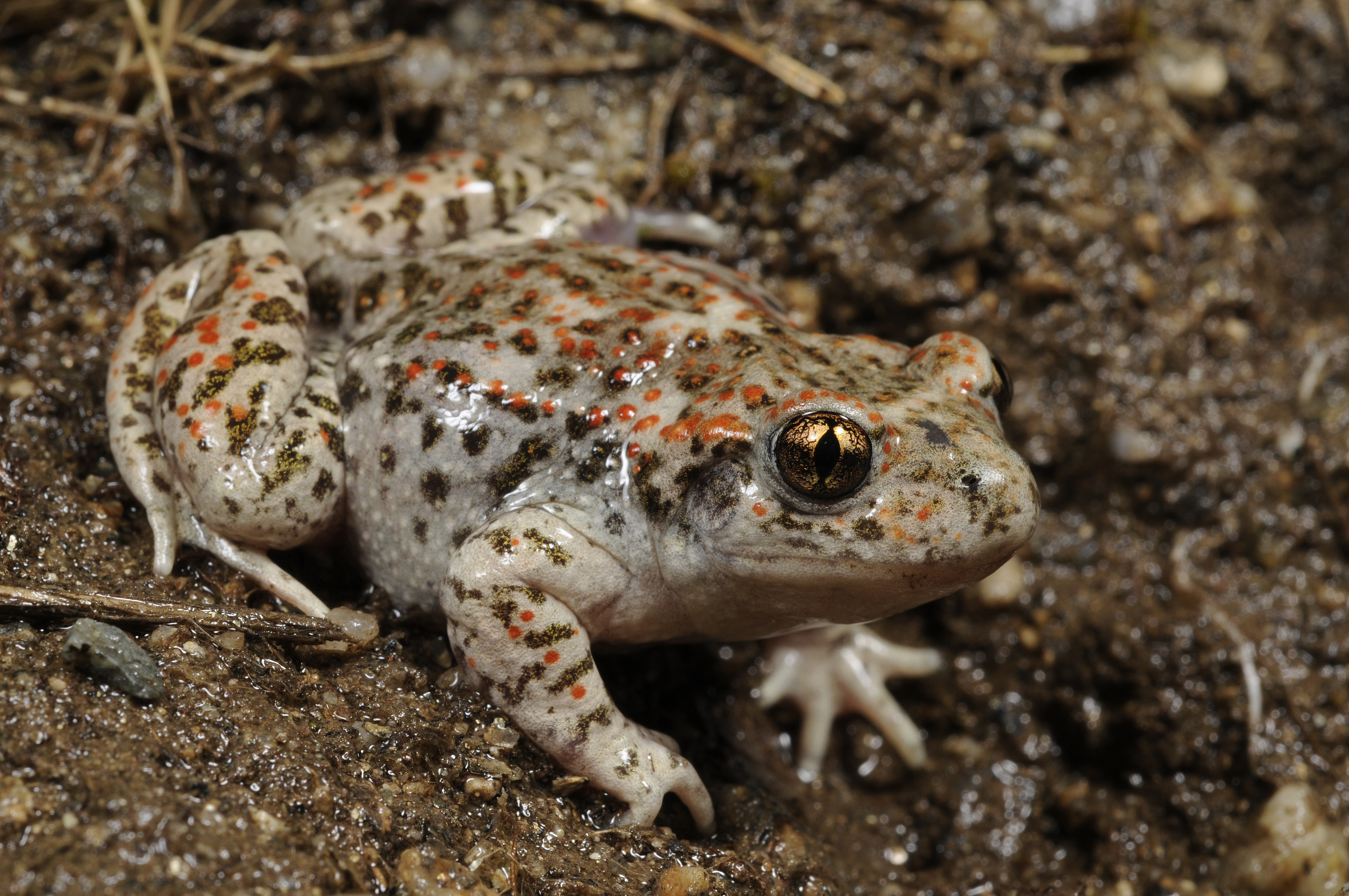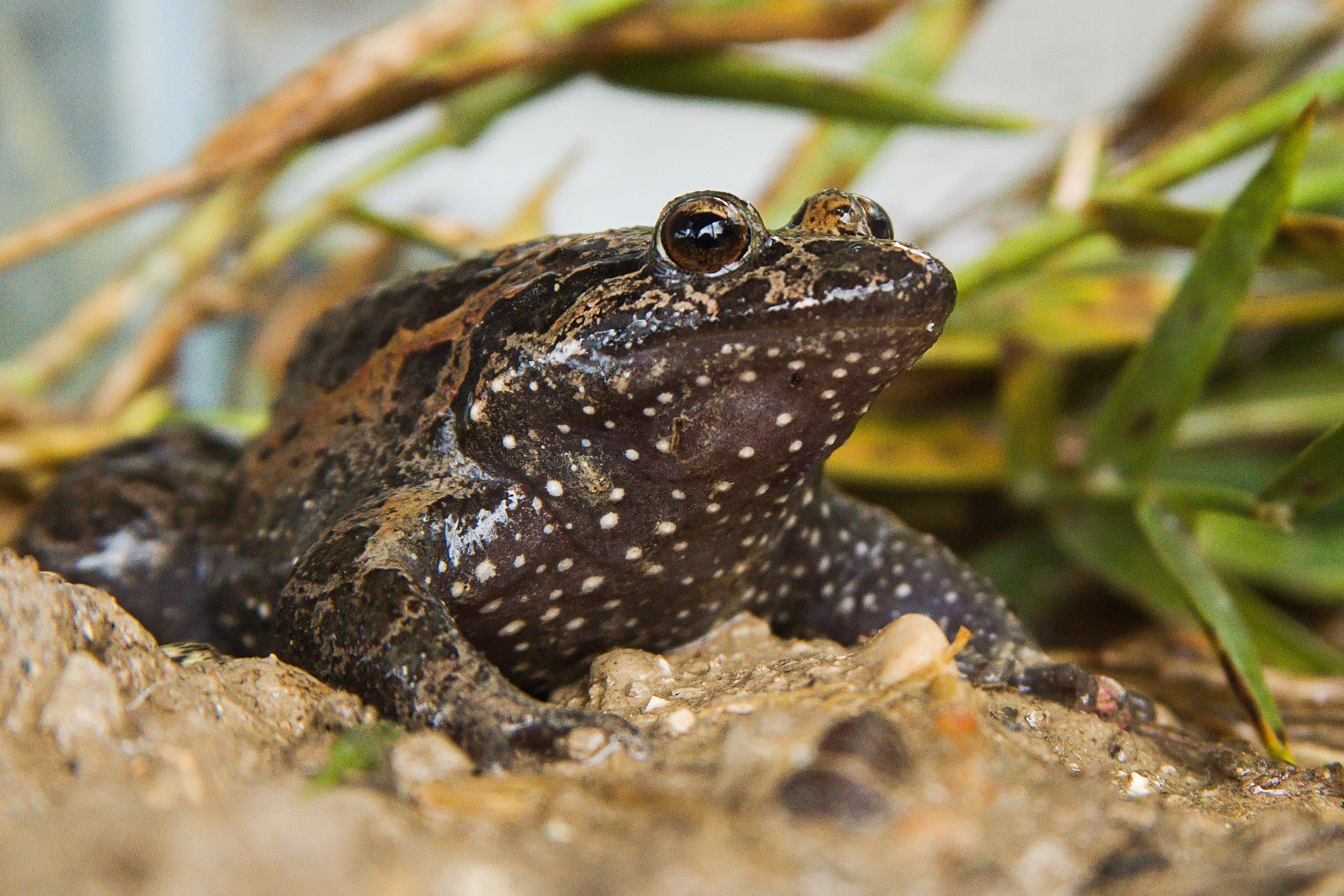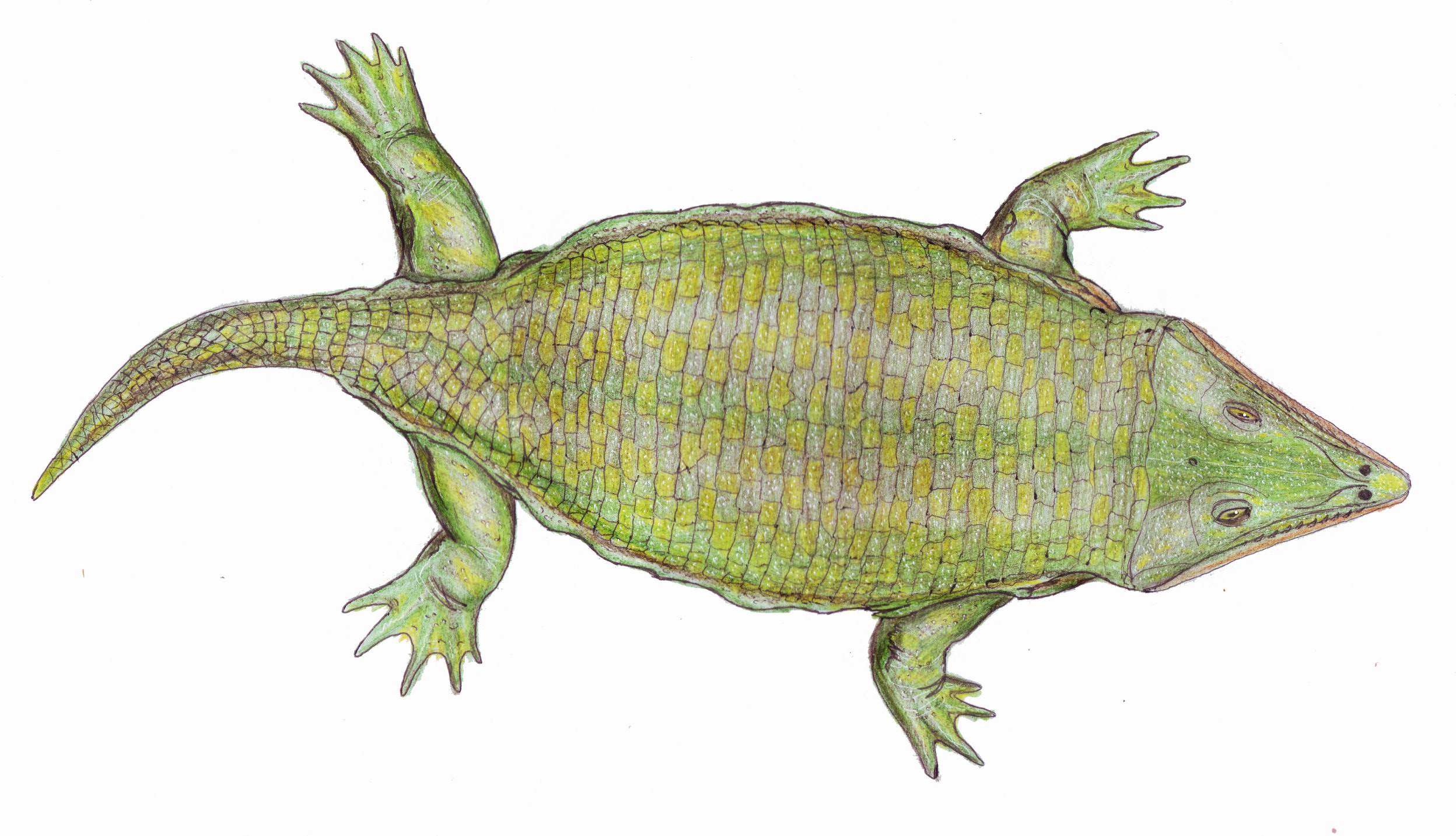|
Callobatrachus
''Callobatrachus'' is an extinct genus of frog from the Early Cretaceous-age Yixian Formation of Liaoning, China. It was described in 1999 by K. Gao of the American Museum of Natural History and Y. Wang of the Chinese Academy of Sciences. It was discovered in the Sihetun locality of the western part of Liaoning province. As frogs are rarely found as articulated skeletons in the fossil record, the discovery of this new taxon has provided important insight into anuran evolution. The holotype, IVPP V11525, is known from a nearly complete skeleton exposed in a dorsal view on a shale slab. Its total body length (from snout to vent) is estimated at approximately 94 mm. It differs morphologically in many respects from all other discoglossoids, including the number of presacral vertebrae (9 instead of the usual 8) and other primitive characters. Although it had a mosaic of primitive and derived characters, it can be unequivocally placed as the most basal taxon of the clade. This sho ... [...More Info...] [...Related Items...] OR: [Wikipedia] [Google] [Baidu] |
Liaobatrachus
''Liaobatrachus'' (meaning "Liaoning frog") is a genus of prehistoric frog, the first fossil specimen of which was recovered from the Yixian Formation of Liaoning Province, China. It was the first Mesozoic era frog ever found in China.Ji, S. and Ji, Q. (1998). "The first Mesozoic frog from China (Amphibia: Anura), ''Liaobatrachus grabaui'' gen. et sp. nov." ''Chinese Geology'', March 1998: 39-49English translation/ref> The species '' Callobatrachus sanyanensis,'' '' Mesophryne beipiaoensis'' and ''Yizhoubatrachus'' ''macilentus'' were classified as species of ''Liaobatrachus'' in one study, but this has been rejected by other authors. The genus has been considered a ''nomen dubium'' by some authors due to the poor preservation of the holotype specimen. Fossils were found in the Sihetun locality of the western part of Liaoning province, in the lower part of the Yixian Formation, and date to approximately 124.6 Ma. Another specimen was collected near Heitizigou, south of Beipiao. ... [...More Info...] [...Related Items...] OR: [Wikipedia] [Google] [Baidu] |
Discoglossid
The Alytidae are a family of primitive frogs. Their common name is painted frogs or midwife toads. Most are endemic to Europe, but three species occur in northwest Africa, and a species formerly thought to be extinct is found in Israel. This family is also known as Discoglossidae, but the older name Alytidae has priority and is now recognized by major reference works. Some researchers, though, suggest that '' Alytes'' and '' Discoglossus'' are different enough to be treated as belonging to separate families, implying resurrection of the Discoglossidae. The term "discoglossid" has also been used to refer to many primitive fossil frogs that share plesiomorphic (ancestral) similities to alytids, but that are probably not closely related. Genera and species The family contains three extant genera, '' Alytes'', '' Discoglossus'', and '' Latonia''. The first is somewhat toad-like and can often be found on land. The second is smoother and more frog-like, preferring the water. The third ... [...More Info...] [...Related Items...] OR: [Wikipedia] [Google] [Baidu] |
Alytidae
The Alytidae are a family of primitive frogs. Their common name is painted frogs or midwife toads. Most are endemic to Europe, but three species occur in northwest Africa, and a species formerly thought to be extinct is found in Israel. This family is also known as Discoglossidae, but the older name Alytidae has priority and is now recognized by major reference works. Some researchers, though, suggest that '' Alytes'' and '' Discoglossus'' are different enough to be treated as belonging to separate families, implying resurrection of the Discoglossidae. The term "discoglossid" has also been used to refer to many primitive fossil frogs that share plesiomorphic (ancestral) similities to alytids, but that are probably not closely related. Genera and species The family contains three extant genera, '' Alytes'', '' Discoglossus'', and '' Latonia''. The first is somewhat toad-like and can often be found on land. The second is smoother and more frog-like, preferring the water. The th ... [...More Info...] [...Related Items...] OR: [Wikipedia] [Google] [Baidu] |
List Of Prehistoric Amphibians
This list of prehistoric amphibians is an attempt to create a comprehensive listing of all genera from the fossil record that have ever been considered to be amphibians, excluding purely vernacular terms. The list includes all commonly accepted genera, but also genera that are now considered invalid, doubtful (''nomina dubia''), or were not formally published ('' nomina nuda''), as well as junior synonyms of more established names, and genera that are no longer considered amphibians. Modern forms are excluded from this list. The list currently includes 454 names. Naming conventions and terminology Naming conventions and terminology follow the International Code of Zoological Nomenclature. Technical terms used include: * Junior synonym: A name which describes the same taxon as a previously published name. If two or more genera are formally designated and the type specimens are later assigned to the same genus, the first to be published (in chronological order) is the senior synon ... [...More Info...] [...Related Items...] OR: [Wikipedia] [Google] [Baidu] |
Early Cretaceous
The Early Cretaceous (geochronological name) or the Lower Cretaceous ( chronostratigraphic name), is the earlier or lower of the two major divisions of the Cretaceous. It is usually considered to stretch from 145 Ma to 100.5 Ma. Geology Proposals for the exact age of the Barremian-Aptian boundary ranged from 126 to 117 Ma until recently (as of 2019), but based on drillholes in Svalbard the defining early Aptian Oceanic Anoxic Event 1a (OAE1a) was carbon isotope dated to 123.1±0.3 Ma, limiting the possible range for the boundary to c. 122–121 Ma. There is a possible link between this anoxic event and a series of Early Cretaceous large igneous provinces (LIP). The Ontong Java- Manihiki- Hikurangi large igneous province, emplaced in the South Pacific at c. 120 Ma, is by far the largest LIP in Earth's history. The Ontong Java Plateau today covers an area of 1,860,000 km2. In the Indian Ocean another LIP began to form at c. 120 Ma, the Kergue ... [...More Info...] [...Related Items...] OR: [Wikipedia] [Google] [Baidu] |
Pedicellate Teeth
Pedicellate teeth are a tooth morphology today unique to modern amphibians Amphibians are four-limbed and ectothermic vertebrates of the class Amphibia. All living amphibians belong to the group Lissamphibia. They inhabit a wide variety of habitats, with most species living within terrestrial, fossorial, arb ..., but also seen in a variety of extinct labyrinthodonts. Pedicellate teeth consist of a tooth crown and a base (both composed of dentine) separated by a layer of uncalcified dentine. Further reading * * External links * http://palaeo.gly.bris.ac.uk/Palaeofiles/Fossilgroups/Amphibia/characters.html Amphibian anatomy {{amphibian-stub ... [...More Info...] [...Related Items...] OR: [Wikipedia] [Google] [Baidu] |
Painted Frogs
Painted frog may refer to: *''Atelopus ebenoides'' – from Central America *'' Discoglossus pictus'' – from the central Mediterranean region. *''Neobatrachus pictus'' – from southern Australia *''Neobatrachus sudelli'' – from eastern Australia *''Discoglossus nigriventer The Hula painted frog (''Latonia nigriventer'') is an amphibian and the only living member of the genus '' Latonia,'' which was originally described from several fossil species from the Oligocene to Early Pleistocene of Europe. The Hula painted f ...'' *'' Kaloula pulchra'' *'' Discoglossus pictus'' – from Africa {{disambiguation Animal common name disambiguation pages ... [...More Info...] [...Related Items...] OR: [Wikipedia] [Google] [Baidu] |
Fossil Taxa Described In 1999
A fossil (from Classical Latin , ) is any preserved remains, impression, or trace of any once-living thing from a past geological age. Examples include bones, Seashell, shells, exoskeletons, stone imprints of animals or microbes, objects preserved in #Resin, amber, hair, petrified wood and DNA remnants. The totality of fossils is known as the ''fossil record''. Paleontology is the study of fossils: their age, method of formation, and evolutionary significance. Specimens are usually considered to be fossils if they are over 10,000 years old. The oldest fossils are around 3.48 billion years old to 4.1 billion years old. Early edition, published online before print. The observation in the 19th century that certain fossils were associated with certain rock stratum, strata led to the recognition of a geological timescale and the relative ages of different fossils. The development of radiometric dating techniques in the early 20th century allowed scientists to quantitativ ... [...More Info...] [...Related Items...] OR: [Wikipedia] [Google] [Baidu] |
Mesozoic Amphibians Of Asia
The Mesozoic Era ( ), also called the Age of Reptiles, the Age of Conifers, and colloquially as the Age of the Dinosaurs is the second-to-last era of Earth's geological history, lasting from about , comprising the Triassic, Jurassic and Cretaceous Periods. It is characterized by the dominance of archosaurian reptiles, like the dinosaurs; an abundance of conifers and ferns; a hot greenhouse climate; and the tectonic break-up of Pangaea. The Mesozoic is the middle of the three eras since complex life evolved: the Paleozoic, the Mesozoic, and the Cenozoic. The era began in the wake of the Permian–Triassic extinction event, the largest well-documented mass extinction in Earth's history, and ended with the Cretaceous–Paleogene extinction event, another mass extinction whose victims included the non-avian dinosaurs, pterosaurs, mosasaurs, and plesiosaurs. The Mesozoic was a time of significant tectonic, climatic, and evolutionary activity. The era witnessed the gradual rifti ... [...More Info...] [...Related Items...] OR: [Wikipedia] [Google] [Baidu] |
Early Cretaceous Frogs
{{disambiguation, geo ...
Early may refer to: History * The beginning or oldest part of a defined historical period, as opposed to middle or late periods, e.g.: ** Early Christianity ** Early modern Europe Places in the United States * Early, Iowa * Early, Texas * Early Branch, a stream in Missouri * Early County, Georgia Other uses * ''Early'' (Scritti Politti album), 2005 * ''Early'' (A Certain Ratio album), 2002 * Early (name) * Early effect, an effect in transistor physics * Early Records, a record label * the early part of the morning See also * Earley (other) Earley is a town in England. Earley may also refer to: * Earley (surname), a list of people with the surname Earley * Earley (given name), a variant of the given name Earlene * Earley Lake, a lake in Minnesota *Earley parser, an algorithm *Earley ... [...More Info...] [...Related Items...] OR: [Wikipedia] [Google] [Baidu] |
Leiopelma
__NOTOC__ ''Leiopelma'' is a genus of New Zealand primitive frogs, belonging to the suborder Archaeobatrachia. It is the only genus in the monotypic family Leiopelmatidae. The leiopelmatids' relatively basal form indicates they have an ancient lineage. While some taxonomists have suggested combining the North American frogs of the genus ''Ascaphus'' in the family Ascaphidae with the New Zealand frogs of the genus ''Leiopelma'' in the family Leiopelmatidae, the current consensus is that these two groups constitute two separate families. The four extant species of Leiopelmatidae are only found in New Zealand. Overview The New Zealand primitive frogs' defining characteristics are their extra vertebrae (for a total of nine) and the remains of the tail muscles (the tail itself is absent in adults, although it is present in the younger frogs, which need the extra skin surface until their lungs are fully developed). The family Ascaphidae (found only in North America), of the same suborde ... [...More Info...] [...Related Items...] OR: [Wikipedia] [Google] [Baidu] |
Ascaphus
The tailed frogs are two species of frogs in the genus ''Ascaphus'', the only taxon in the family Ascaphidae . The "tail" in the name is actually an extension of the male cloaca. The tail is one of two distinctive anatomical features adapting the species to life in fast-flowing streams. These are the only North American frog species that reproduce by internal fertilization. They are among the most primitive known families of frogs. Its scientific name means 'without a spade', from the privative prefix '' a-'' and the Ancient Greek ' (, 'spade, shovel'), referring to the metatarsal spade, which these frogs do not have. Taxonomy Until 2001, the genus was believed to be monotypic, the single species being the tailed frog (''Ascaphus truei'' Stejneger, 1899). However, in that year, Nielson, Lohman, and Sullivan published evidence that promoted the Rocky Mountain tailed frog (''Ascaphus montanus'') from a subspecies to its own species. Since then, the former species has been formal ... [...More Info...] [...Related Items...] OR: [Wikipedia] [Google] [Baidu] |




